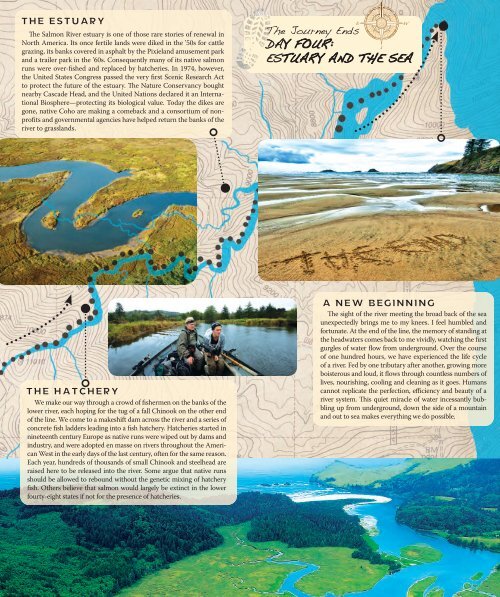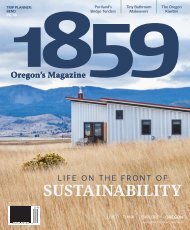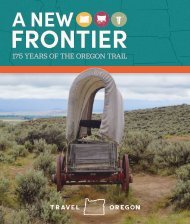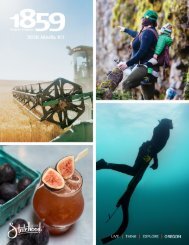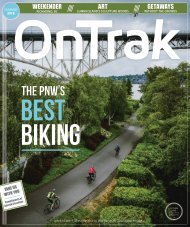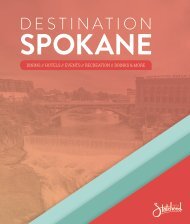Create successful ePaper yourself
Turn your PDF publications into a flip-book with our unique Google optimized e-Paper software.
The Estuary<br />
The Salmon River estuary is one of those rare stories of renewal in<br />
North America. Its once fertile lands were diked in the ’50s for cattle<br />
grazing, its banks covered in asphalt by the Pixieland amusement park<br />
and a trailer park in the ’60s. Consequently many of its native salmon<br />
runs were over-fished and replaced by hatcheries. In 1974, however,<br />
the United States Congress passed the very first Scenic Research Act<br />
to protect the future of the estuary. The Nature Conservancy bought<br />
nearby Cascade Head, and the United Nations declared it an International<br />
Biosphere—protecting its biological value. Today the dikes are<br />
gone, native Coho are making a comeback and a consortium of nonprofits<br />
and governmental agencies have helped return the banks of the<br />
river to grasslands.<br />
The Journey Ends<br />
DAY FOUR:<br />
ESTUARY AND THE SEA<br />
The Hatchery<br />
We make our way through a crowd of fishermen on the banks of the<br />
lower river, each hoping for the tug of a fall Chinook on the other end<br />
of the line. We come to a makeshift dam across the river and a series of<br />
concrete fish ladders leading into a fish hatchery. Hatcheries started in<br />
nineteenth century Europe as native runs were wiped out by dams and<br />
industry, and were ad<strong>opt</strong>ed en masse on rivers throughout the American<br />
West in the early days of the last century, often for the same reason.<br />
Each year, hundreds of thousands of small Chinook and steelhead are<br />
raised here to be released into the river. Some argue that native runs<br />
should be allowed to rebound without the genetic mixing of hatchery<br />
fish. Others believe that salmon would largely be extinct in the lower<br />
fourty-eight states if not for the presence of hatcheries.<br />
A New Beginning<br />
The sight of the river meeting the broad back of the sea<br />
unexpectedly brings me to my knees. I feel humbled and<br />
fortunate. At the end of the line, the memory of standing at<br />
the headwaters comes back to me vividly, watching the first<br />
gurgles of water flow from underground. Over the course<br />
of one hundred hours, we have experienced the life cycle<br />
of a river. Fed by one tributary after another, growing more<br />
boisterous and loud, it flows through countless numbers of<br />
lives, nourishing, cooling and cleaning as it goes. Humans<br />
cannot replicate the perfection, efficiency and beauty of a<br />
river system. This quiet miracle of water incessantly bubbling<br />
up from underground, down the side of a mountain<br />
and out to sea makes everything we do possible.<br />
<strong>1859</strong> oregon's mAgAzine SEPT OCT <strong>2012</strong>


